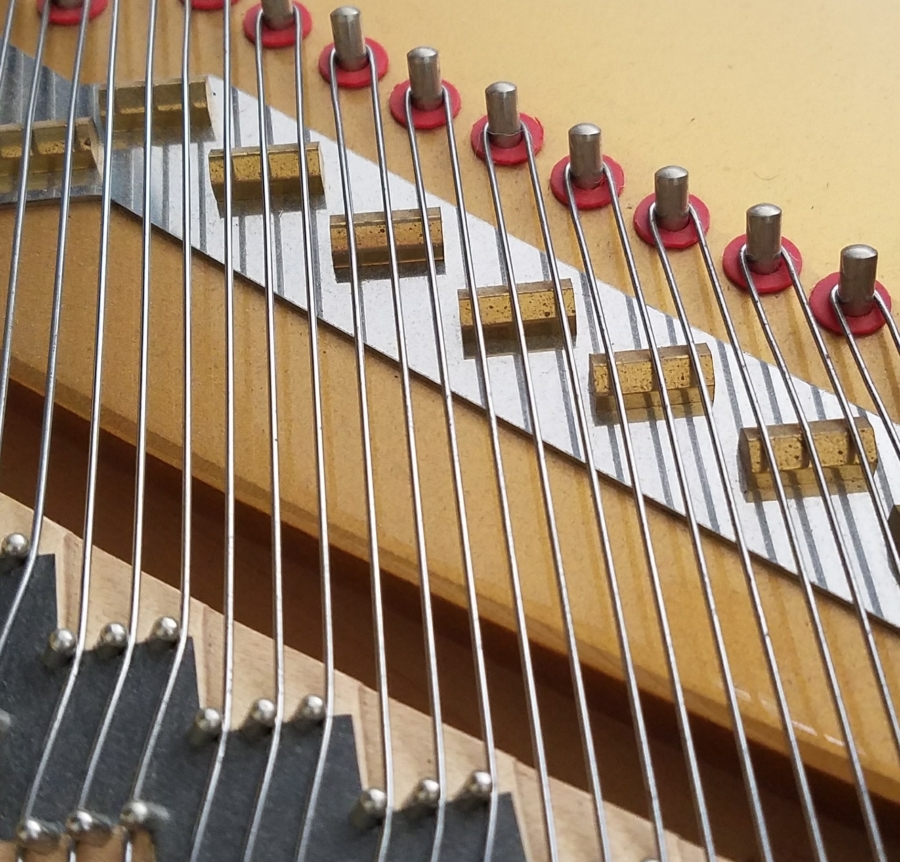A duplex scale is a length of the string, other than the speaking length, that is intended to vibrate sympathetically.
That’s my definition, how they define it at the Oscar Walcker School is not known to me. There is often a rear duplex, but there can also be a front duplex, making it a triplex?
The speaking length is the part of the string that is hit by the hammer and creates the basic tone coming from the piano. This length is determined by the bridge at the back and the capo bar or agraff at the front. Rear duplex scales are the most common and are those that are on the far side of the bridge, between the rear bridge pins and the hitch pin. Front duplex strings lengths are found between the tuning pin and the capo bar or agraffe. Usually a front duplexes scale occurs only in the capo bar area. The front lengths in the agraff section are almost always muted with felt.
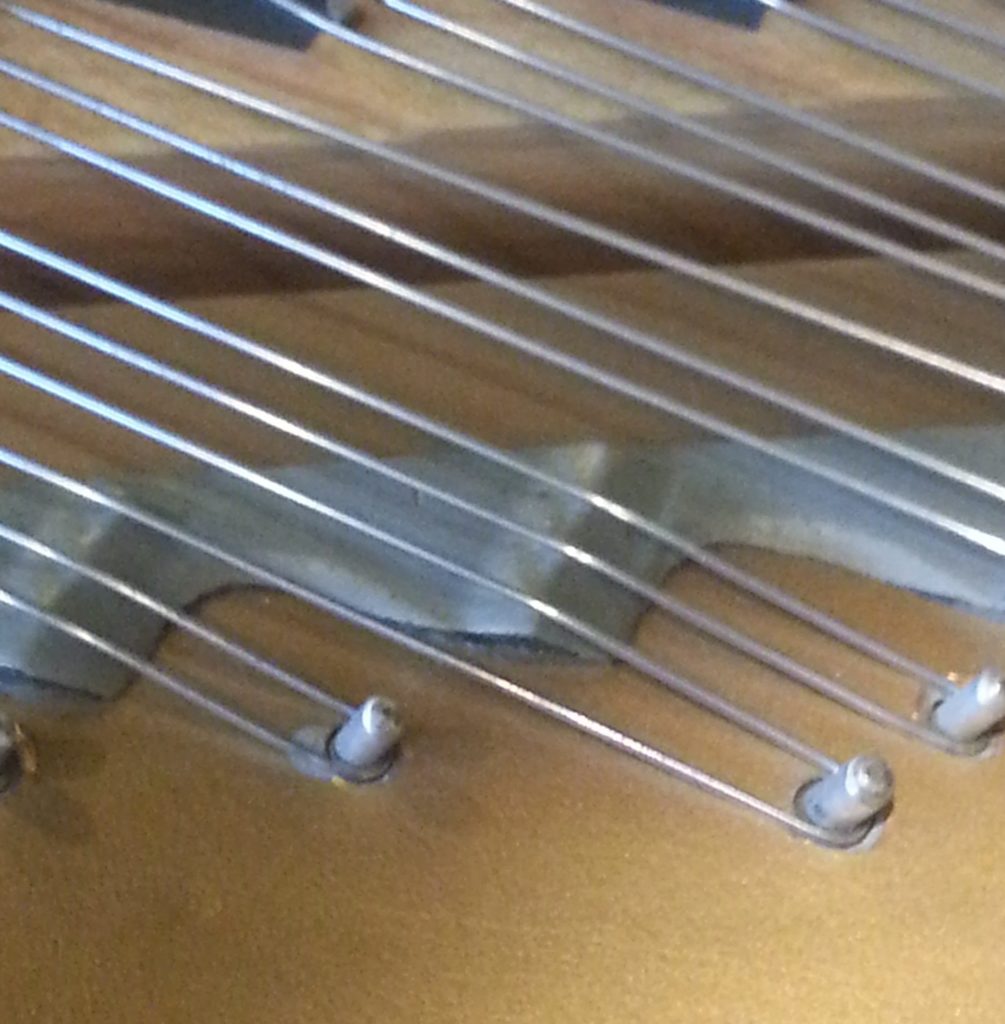
Duplex scales provide and additional “wash” of high harmonics that some people consider desirable.
Sometimes these high harmonics are intended to be a tuned harmonic of the speaking length, called a “tuned duplex”. These are identified by the individual termination points, as shown in the examples below. Frequently the termination points on a rear tuned duplex scale can be moved, indicating their ability to be tuned. Other times this termination point is rather rounded and not individually movable, resulting in a less harmonic effect with more of a wash of high harmonics.
Here is a precisely terminated tunable rear duplex scale on an Estonia.
A NON-tuned rear on a Bluthner.
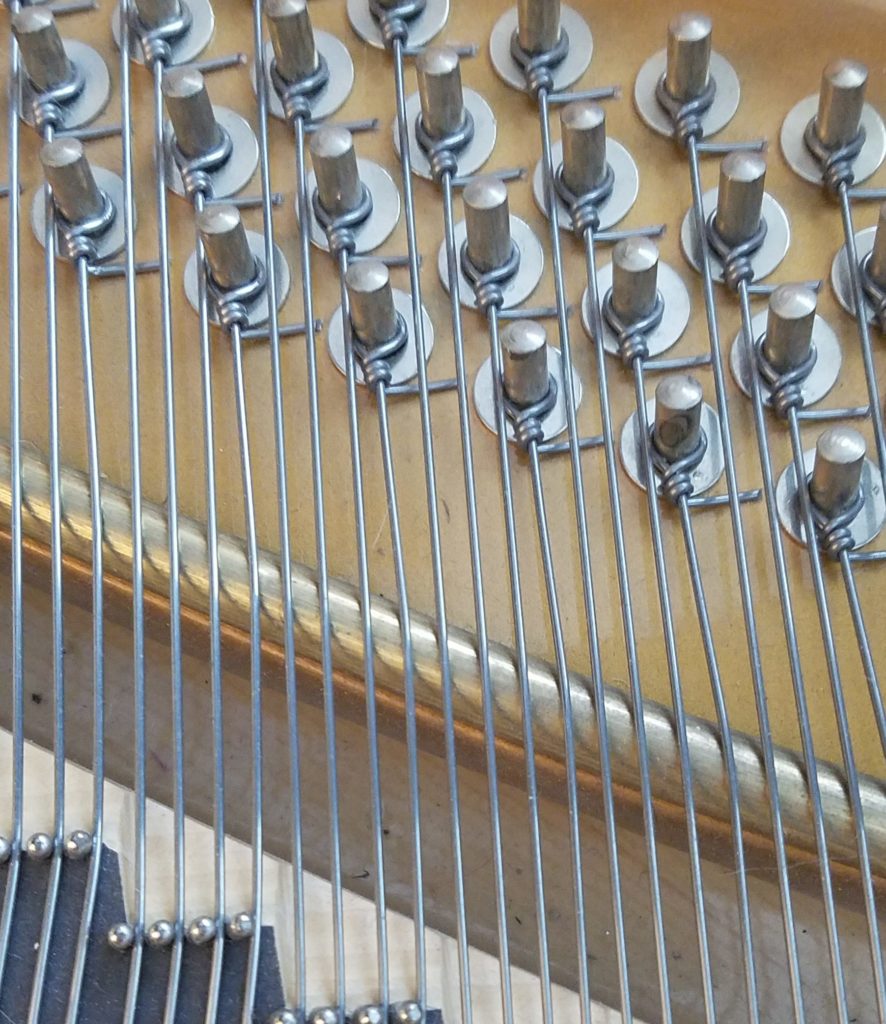
Tunable front duplex, on Estonia
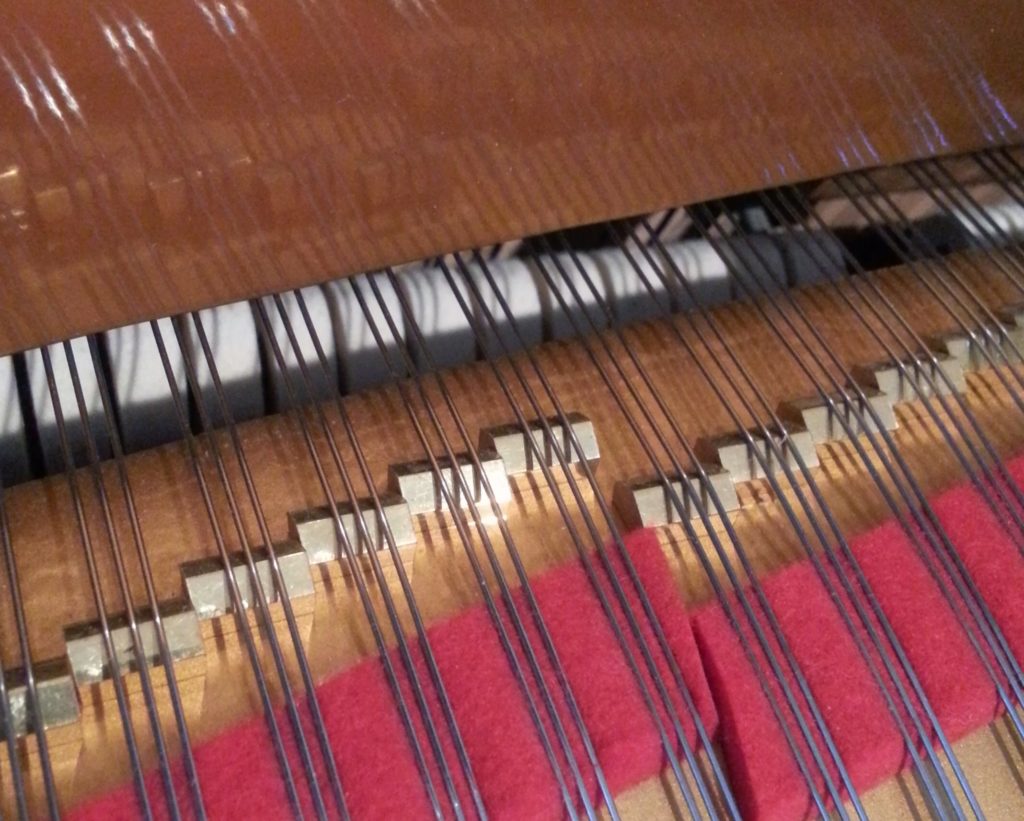
Untuned rear non-duplex on a Bosendorfer
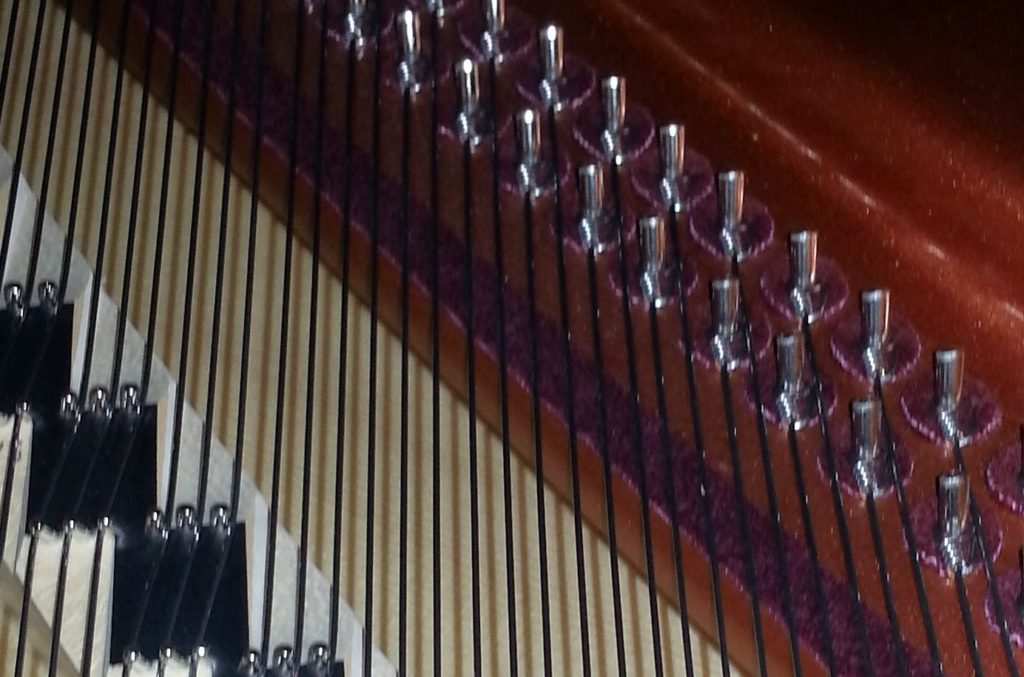
So, who cares really?
It depends on your concept of good piano tone.
The more precise the termination, the more harmonic the result. The less precise the termination, the more inharmonic the result…more like a “sssshhhhhhhh” wafting over the general tone of the piano.
Generally the lower tension rim builders tend towards no or reduced duplex and the high tension rim builders go for the duplex terminated to varying degrees of preciseness.
Here is an example of a very precisely tuned FRONT duplex:
And here is perhaps the opposite extreme, still in a tuned duplex.
One is not better than the other!
These are some of the components that go into the overall tone of a piano. My YouTube Channel has more examples of how duplex scales sound.
Which do you like?
